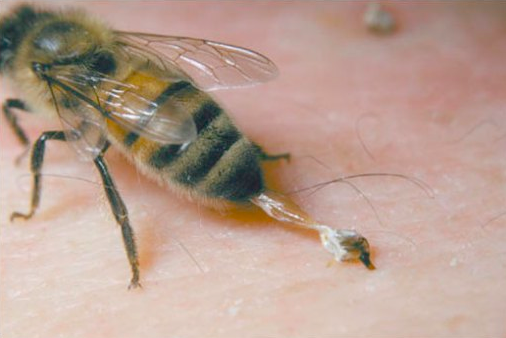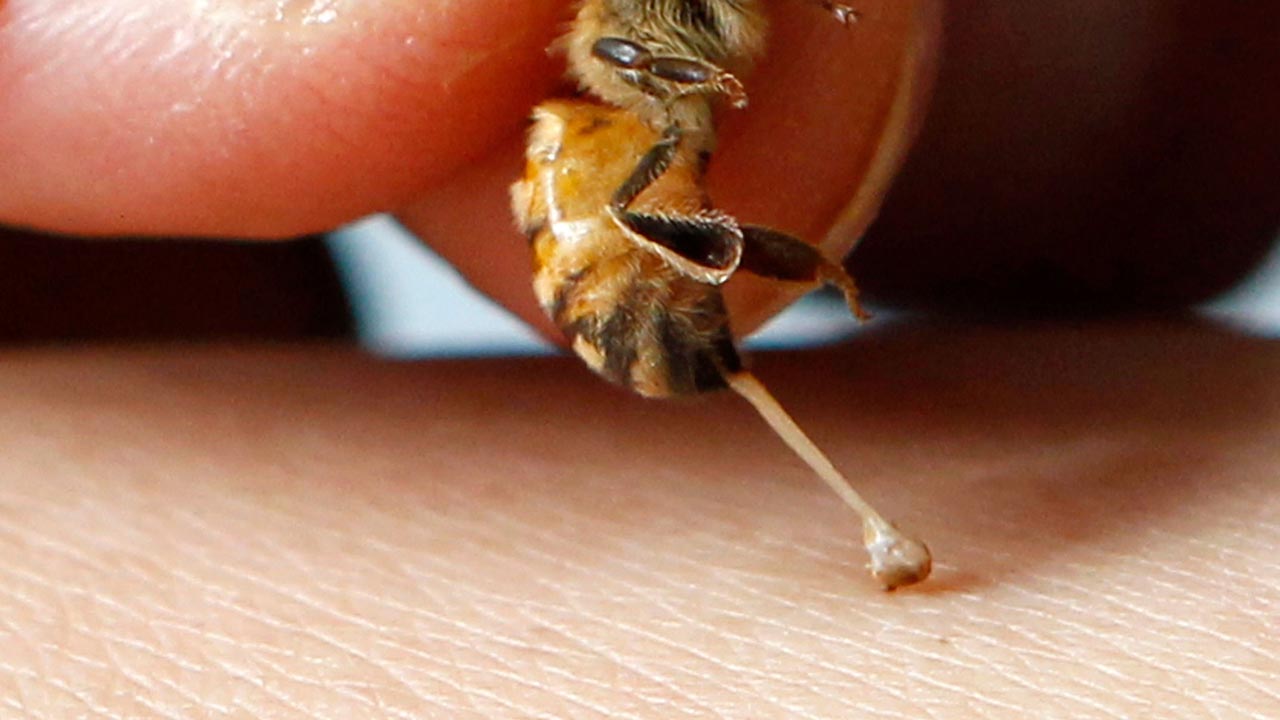

This results in a leakage of fluid out of the blood and into the body tissues. The mast cells release histamine and other biologically active substances. In allergic persons, venom components circulating in the body combine with antibodies that are associated with mast cells resting on vital organs. Symptoms can begin immediately following the sting or up to 30 minutes later and may last for hours. Life-threatening reactions such as shock, dizziness, unconsciousness, difficulty breathing, and laryngeal blockage resulting from swelling in the throat require immediate medical care. Allergic reactions to bee or wasp stings can develop anywhere on the body and may include non-life-threatening reactions such as hives, swelling, nausea, vomiting, abdominal cramps, and headaches. If you suspect that you or a family member might be allergic or is developing an allergy, go to a physician or allergist for testing. AnaphylaxisĪ small percentage of the population is allergic to wasp or bee stings. If the sting is followed by severe symptoms or if it occurs on the neck or mouth, seek medical attention immediately, because swelling in these areas of the body can cause suffocation.
#Bee venom skin#
Aerosol or cream antihistamine preparations that contain a skin coolant also can help. Several over-the-counter products or simply a cold compress can be used to alleviate the pain of a sting. If a stinger is removed within 15 seconds of the sting, the severity of the sting is reduced.Īfter the stinger is removed, wash the wound and treat it.

Fingernails or the edge of a credit card are both effective tools. Much has been written about the proper way to remove a bee stinger, but new information indicates it doesn’t matter how you get it out as long as it is removed as soon as possible. Remove the stinger as quickly as possible because venom continues to enter the skin from the stinger for 45 to 60 seconds following a sting. When the sting is caused by a honey bee, the stinger usually remains in the skin when the insect leaves because the stinger is barbed. Try not to rub or scratch the sting site, because microbes from the surface of the skin could be introduced into the wound, resulting in an infection. Oral and topical antihistamines should help prevent or reduce the itching and swelling. This can lead to very large swelling around the sting site or in a whole portion of the body. If this isn’t the first time the person has been stung by that species of insect, it is likely that the immune system will recognize the venom and enhance the disposal procedure. This causes redness and swelling at the sting site. The body responds to stings by liberating fluid from the blood to flush venom components from the area. Even up to a few days later, the tissue may still be sensitive to the touch. The result is a very uncomfortable sensation, which begins as a sharp pain that lasts a few minutes and then becomes a dull ache. The major chemical responsible for this is melittin it stimulates the nerve endings of pain receptors in the skin. Stingers are effective weapons because they deliver a venom that causes pain when injected into the skin. They are more likely to defend a greater area around their nest, and they respond faster and in greater numbers than the European honey bee. However, Africanized honey bees are less predictable and more defensive than European honey bees. Neither is likely to sting when gathering nectar and pollen from flowers, but both will sting in defense if provoked.Īn individual Africanized bee can sting only once and has the same venom as the European honey bee. The two types of bees look the same, and their behavior is similar in many respects.

The Africanized honey bee is closely related to the European honey bee, which is used in agriculture for crop pollination and honey production. For more information on the behavior, biology, and management of this insect, see Pest Notes: Yellowjackets and Other Social Wasps. Some, such as the yellowjacket, are much more likely to attack than others. In addition, foraging members of the colony also will sting if they are disturbed or injured as they go about their activities. If the nest is disturbed, these individuals will defend it vigorously. Social hymenopterans-including yellowjackets, honey bees, bumble bees, and fire ants-have individuals in the colony whose task it is to defend the nest. Most hymenopterans live solitary lives, and their behavior is more likely to be flight than fight. The stinger is a modified egg-laying apparatus, so only females can sting. Stinging insects are limited to the order Hymenoptera, which includes wasps, bees, and ants.


 0 kommentar(er)
0 kommentar(er)
